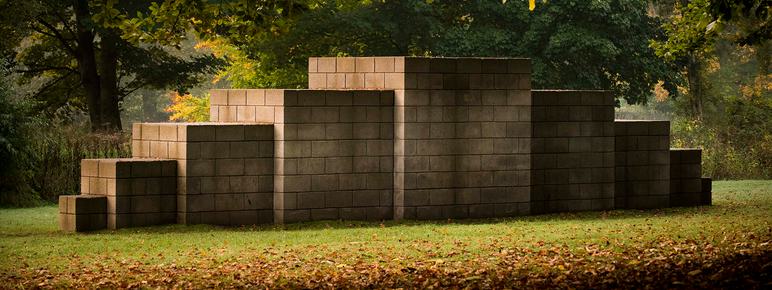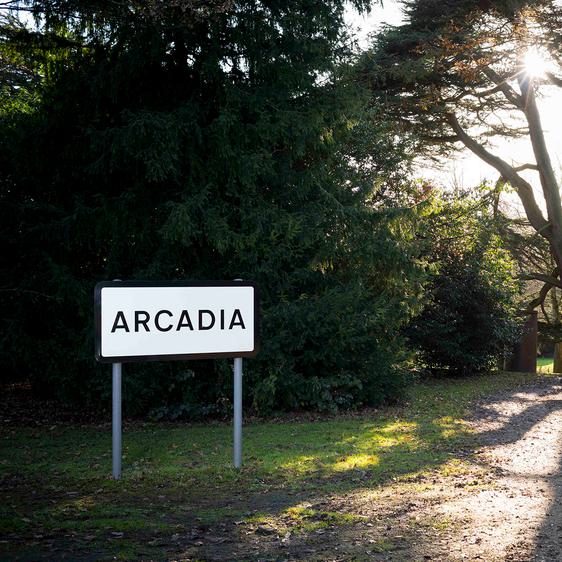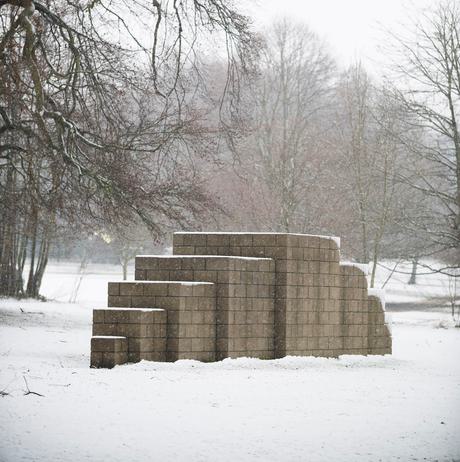
Sol LeWitt: 123454321
Art Outdoors /Sol LeWitt: 123454321
Sol LeWitt’s work helped to establish both the Minimalist and Conceptual art movements. In the early 1960s, he began to create his first "structures”, a term he used to describe his three-dimensional work. He was heavily inspired by the cube, a form he returned to often in his works. Beginning in the mid-1980s, LeWitt composed his first installations from stacked cinder blocks, and began to work with concrete blocks.
123454321 expresses LeWitt’s approach to minimalist composition. It is a construction of cinder blocks set in a formal arrangement. Each series of blocks is in the proportion 1:1:2. This ratio forms the sequence for the whole structure and is typical of his use of simple numerical systems and serial progressions. The work has a restrained and calculated beauty, which stems from the purity of mathematical principles.
This is the only sculpture by LeWitt in a British landscape open to the public, and is located on a site that he chose personally.
You might also like
- Art Outdoors

Anthony Caro: Dream City
- Art Outdoors

Kimsooja: A Needle Woman: Galaxy was a Memory, Earth is a Souvenir
Kimsooja developed this elegant and towering conical sculpture in collaboration with scientists at Cornell University. The nanopolymer in which its panels are covered enhances the refractive qualities of light, giving an iridescent effect similar to that which occurs naturally on the wings of a butterfly or a beetle’s shell. It is responsive to changing light conditions and brought to life by sunlight on its surface. - Art Outdoors

Leo Fitzmaurice: Arcadia
- Art Outdoors

Ursula von Rydingsvard: Damski Czepek
Damski Czepek translates as ‘lady’s bonnet’, and has a central hood-like form, with snaking ribbons extending out into the landscape. The shape welcomes you in and envelopes you, and echoes some of the eighteenth-century follies across the estate, such as the Shell Grotto.


